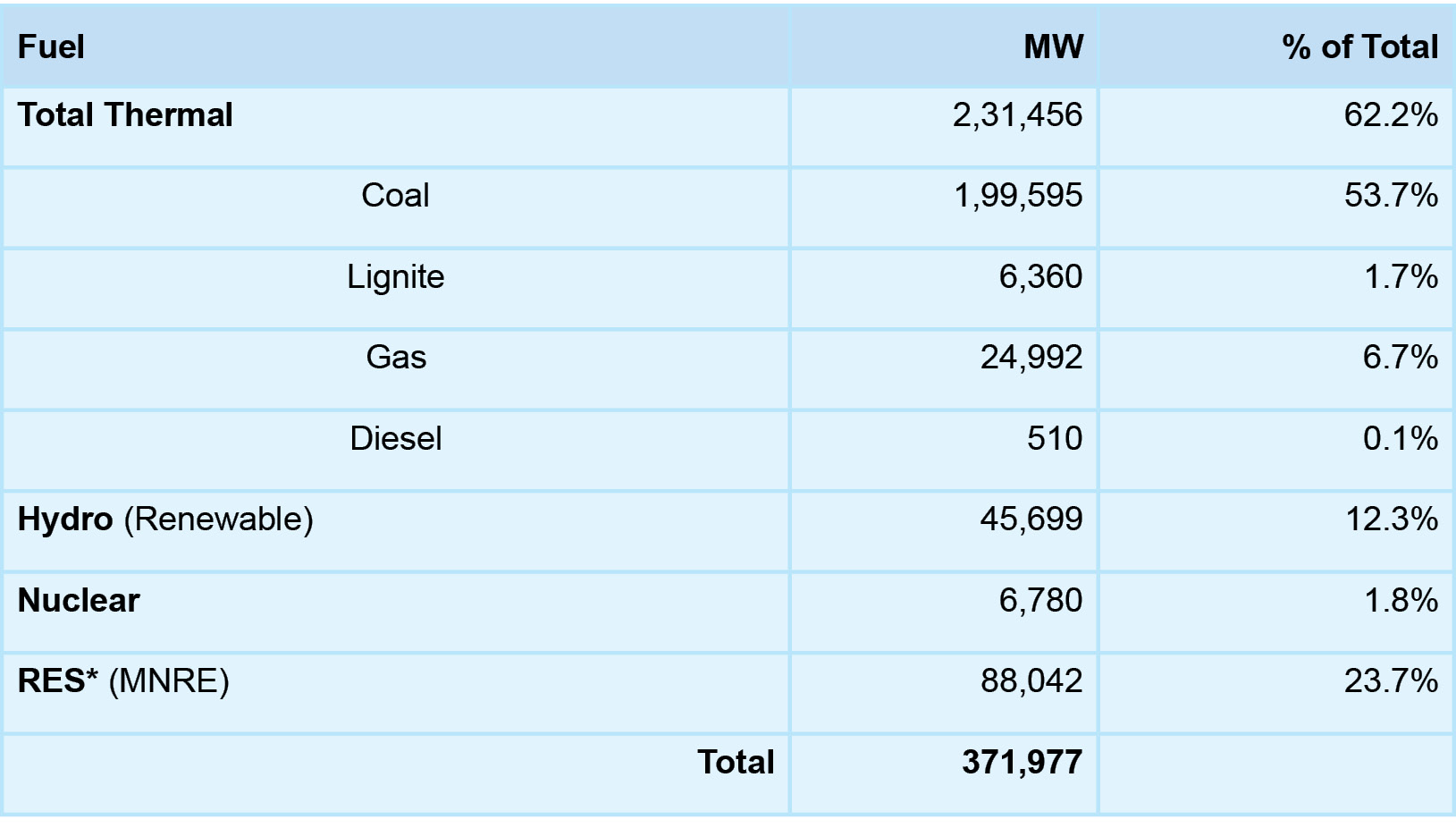Governance
Reducing Emissions from Coal-Based Power Sector
- 15 Dec 2020
- 6 min read
Why in News
Recently, in a webinar by think-tank Centre for Science and Environment (CSE), experts discussed the measures to reduce carbon dioxide (CO2) footprints of India’s coal-based power sector.
- Centre for Science and Environment (CSE) is a public interest research and advocacy organisation based in New Delhi.
- CSE researches into, lobbies for and communicates the urgency of development that is both sustainable and equitable.
Key Points
- Power Generation in India:
- India mainly uses three types of thermal power plants- Coal, Gas and Liquid-fuel based.
- The electricity generated by these plants adds up to 62.2% of the total power generation in the country.
- Emissions from coal-based Power Sector:
- India’s coal-based thermal power sector is one of the country’s biggest emitters of CO2.
- It emits 1.1 giga-tonne of CO2 every year; this is 2.5% of global GreenHouse Gas (GHG) emissions, one-third of India’s GHG emissions, and around 50% of India’s fuel-related CO2 emissions.
- Policies Needed to Reduce Emissions:
- Improving fleet technology and efficiency, renovating and modernising:
- India has one of the youngest coal-based thermal plants in the world, with around 64% of the capacity (132 GW) less than a decade old.
- The government’s renovation and modernisation policies need to play a key role in maintaining the efficiency of this fleet.
- Planning for the Old Capacity:
- In 2015, over 34 GW capacity in India was more than 25 years old, and 60% of it was highly inefficient.
- Increasing India’s renewable electricity generation can help further the cause to accelerate the retirement of old and inefficient plants.
- Propagating Biomass Co-firing:
- Biomass co-firing stands for adding biomass as a partial substitute fuel in high efficiency coal boilers.
- Coal and biomass are combusted together in boilers that have been designed to burn coal. For this purpose, the existing coal power plant has to be partly reconstructed and retrofitted.
- Co-firing is an option to convert biomass to electricity, in an efficient and clean way, and to reduce GHG emissions of the power plant.
- Biomass co-firing is a globally accepted cost-effective method for decarbonising a coal fleet.
- Decarbonising means reducing carbon intensity, i.e. reducing the emissions per unit of electricity generated (often given in grams of carbon dioxide per kilowatt-hour).
- India is a country where biomass is usually burnt on the field which reflects apathy towards resolving the problem of clean coal using a very simple solution that is readily available.
- Biomass co-firing stands for adding biomass as a partial substitute fuel in high efficiency coal boilers.
- Investing in Carbon Capture and Storage (CCS):
- Globally, carbon capture and storage has struggled to pick up and India’s prospects appear to be dim at least until 2030.
- Businesses should invest in indigenous research and development to bring down the costs of CCS.
- Coal Beneficiation:
- Coal Beneficiation is a process by which the quality of raw coal is improved by either reducing the extraneous matter that gets extracted along with the mined coal or reducing the associated ash or both.
- Improving fleet technology and efficiency, renovating and modernising:
- Other Initiatives to Reduce Emissions:
- India shifted from Bharat Stage-IV (BS-IV) to Bharat Stage-VI (BS-VI) emission norms from 1st April 2020 which was earlier to be adopted by 2024.
- It has distributed more than 360 million LED bulbs under the UJALA scheme, which has led to energy saving of about 47 billion units of electricity per year and reduction of 38 million tonnes of CO2 per year.
- International Solar Alliance: It is an Indian initiative conceived as a coalition of solar-resource-rich countries (which lie either completely or partly between the tropic of Cancer and the tropic of Capricorn) to address their special energy needs.
- The National Action Plan on Climate Change (NAPCC) was launched in 2008 which aims at creating awareness among the representatives of the public, different agencies of the government, scientists, industry and the communities on the threat posed by climate change and the steps to counter it.
Way Forward
- Renewable capacity addition alone cannot be enough; ambitious plans to reduce GHG emissions in the coal sector are equally needed to meaningfully tackle climate change.
- We need an energy transformation through which we would realise the co-benefits of local and global emission reduction. We also need the right to energy for all, as energy poverty and inequity is not acceptable.
- Diversified energy mix is what India needs to focus on, no doubt solar and wind have a lot of potential, Hydrogen would also be a game changer in Indian energy transition space.





